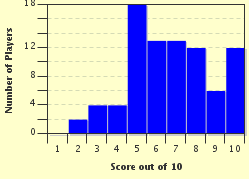Quiz Answer Key and Fun Facts
1. There are four traditional types of theater in Japan: bunraku, noh, kyogen and kabuki. Which one of the theater forms involves puppets as its main feature?
2. Ikebana is a popular Japanese art of arranging which items? It may help to know that Ikebana is derived from "ikeru" which means "keep alive" in Japanese.
3. Dogu are famous Japanese sculptures that bear resemblance to humans and animals that were made during which period of Japanese history when people living in Japan were still primitive hunters and gatherers?
4. Kimonos are only worn by women. Men will never wear a kimono.
5. The famous woodprint "The Great Wave off Kanagawa" is the first of in a series carved by Hokusai called "Thirty-Six Views" of what?
6. Which of the following Japanese sports is NOT a form of martial arts?
7. What is the name of the traditional Japanese lute pictured to the left?
8. Which style of Japanese writing, pictured to the side, is characterized by straight lines and corners and is generally used when writing non-Japanese words?
9. Which of the following best describes the Japanese style of garden called "karesansui?"
10. Which form of Japanese pop culture could be considered the Japanese equivalent to comic books?
Source: Author
Joepetz
This quiz was reviewed by FunTrivia editor
trident before going online.
Any errors found in FunTrivia content are routinely corrected through our feedback system.

